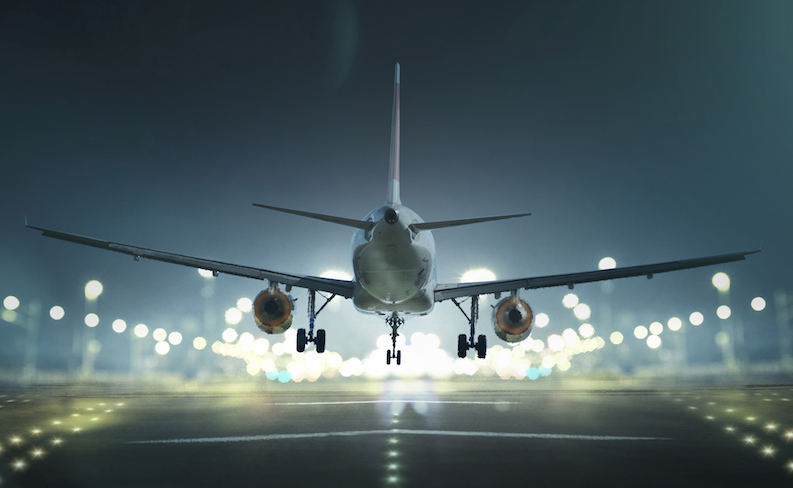
FAA joins aviation regulators worldwide in grounding planes following two fatal crashes.
Last October, a Boeing 737 MAX 8 operated by Lion Air plunged into the sea in Indonesia shortly after takeoff, killing all 189 people on board. Four and a half months later, another Boeing 737 MAX 8 crashed shortly after takeoff in Ethiopia, killing all 157 passengers and crew.
Regulators around the world fear that the 737 MAX 8 and 9 aircraft or its control software may have serious safety flaws. Dozens of aviation agencies and airlines worldwide have temporarily grounded these planes pending further investigations into their airworthiness. The U.S. Federal Aviation Administration (FAA), after initially stating that there was “no basis” for grounding the planes, later reversed its stance due to “new evidence” from the crash site.
By contrast, within 48 hours of the Ethiopian crash, the EU, Australia, China, United Kingdom, and other countries adopted bans on 737 MAX 8 and 9 aircraft.
The still-ongoing investigation of the Lion Air crash revealed a malfunctioning safety system that caused the nose of the plane involved to tilt downward despite the pilots’ best efforts. Aviation authorities reportedly observed “similarities” in the Ethiopian Airlines crash that raised concerns about the 737 MAX 8. Ethiopian Transport Minister Dagmawit Moges later confirmed that the flight data and voice recorders, or “black boxes,” were in good condition and reportedly showed “clear similarities” between the two crashes.
The United States, however, was not as quick to take action. Two days after the Ethiopian crash, Acting FAA Administrator Daniel K. Elwell stated that the agency’s review “shows no systemic performance issues and provides no basis to order grounding the aircraft.”
The FAA’s apparent delay in grounding the planes sparked reactions from aviation professionals. The Association of Flight Attendants-CWA, a union of almost 50,000 flight attendants, called for the grounding “out of an abundance of caution.” The union’s international president, Sara Nelson, stated that “public confidence in the safety of air travel” was at stake and urged the FAA to “act decisively.”
Lori Bassani, president of the Association of Professional Flight Attendants, called on American Airlines CEO Doug Parker “to strongly consider grounding these planes until a thorough investigation can be performed.”
Not all reactions called for grounding the planes, however. Southwest Airlines Pilot Association president Jonathan L. Weaks stated that he supported Southwest’s “continued confidence in the airworthiness and safety” of the planes. Todd Insler, United Airlines’ representative in the Air Line Pilots Association, reportedly stated that United pilots “have flown 23,000 hours in the MAX 9,” and that nothing in their data suggested any issues “related to aircraft performance or mechanical deficiency.”
U.S. politicians from both major parties favored grounding the planes. Senator Mitt Romney (R-Utah) tweeted that the FAA should ground them “out of an abundance of caution for the flying public.” Senator Elizabeth Warren (D-Mass.) tweeted that the FAA should “follow the lead” of nations that grounded the 737 MAX 8. Senator Ted Cruz (R-Texas) stated that it would be “prudent” to ground the planes, and that, as chairman of the Senate Subcommittee on Aviation and Space, he intended “to hold a hearing to investigate these crashes.”
President Donald J. Trump weighed in early, tweeting that modern aircrafts “are becoming far too complex to fly” but not calling for a ban of the planes. But just one day after Acting Administrator Elwell’s announcement that the FAA lacked a basis for grounding the planes, President Trump changed his tone and called upon the FAA to issue an emergency order “to ground all flights” of both the 737 MAX 8 and 9.
The FAA followed with just such an order. Acting Administrator Elwell claimed that “new information from the wreckage concerning the aircraft’s configuration just after takeoff” had revealed similarities between the Ethiopian Airlines crash and the Lion Air crash. These similarities merited “further investigation of the possibility of a shared cause” between the incidents.
This is not the first time that the FAA has grounded Boeing aircraft. In 2013, the lithium ion batteries on two then-new Boeing 787 Dreamliners leaked, causing damage from heat and smoke and providing a serious fire risk. The FAA issued an emergency airworthiness directive requiring 787 operators to “demonstrate to the Federal Aviation Administration that the batteries are safe.” At the time of that directive, the 787 was already subject to a “comprehensive review” by the FAA to ensure “that the aircraft meets the FAA’s high level of safety.” It took over three months for the FAA to approve changes to the battery systems and allow 787s to return to the skies.
The only other grounding of an entire class of plane occurred in 1979 when the FAA grounded all McDonnell Douglas DC-10 aircraft after the crash of American Airlines flight 191, the deadliest single airplane crash ever in the United States. Investigators later discovered that the cause of the crash was a faulty maintenance procedure, but two prior crashes involving DC-10s led to public perceptions that the plane was unsafe. The FAA lifted the grounding after a month, once investigators had made it clear that the aircraft design was not at fault in the crash.
As with the DC-10, the 737 MAX 8 saw multiple accidents lead to public concern about the aircraft. Airlines now will likely have to wait weeks if not even months before their 737 MAXs can be put back into operation.



